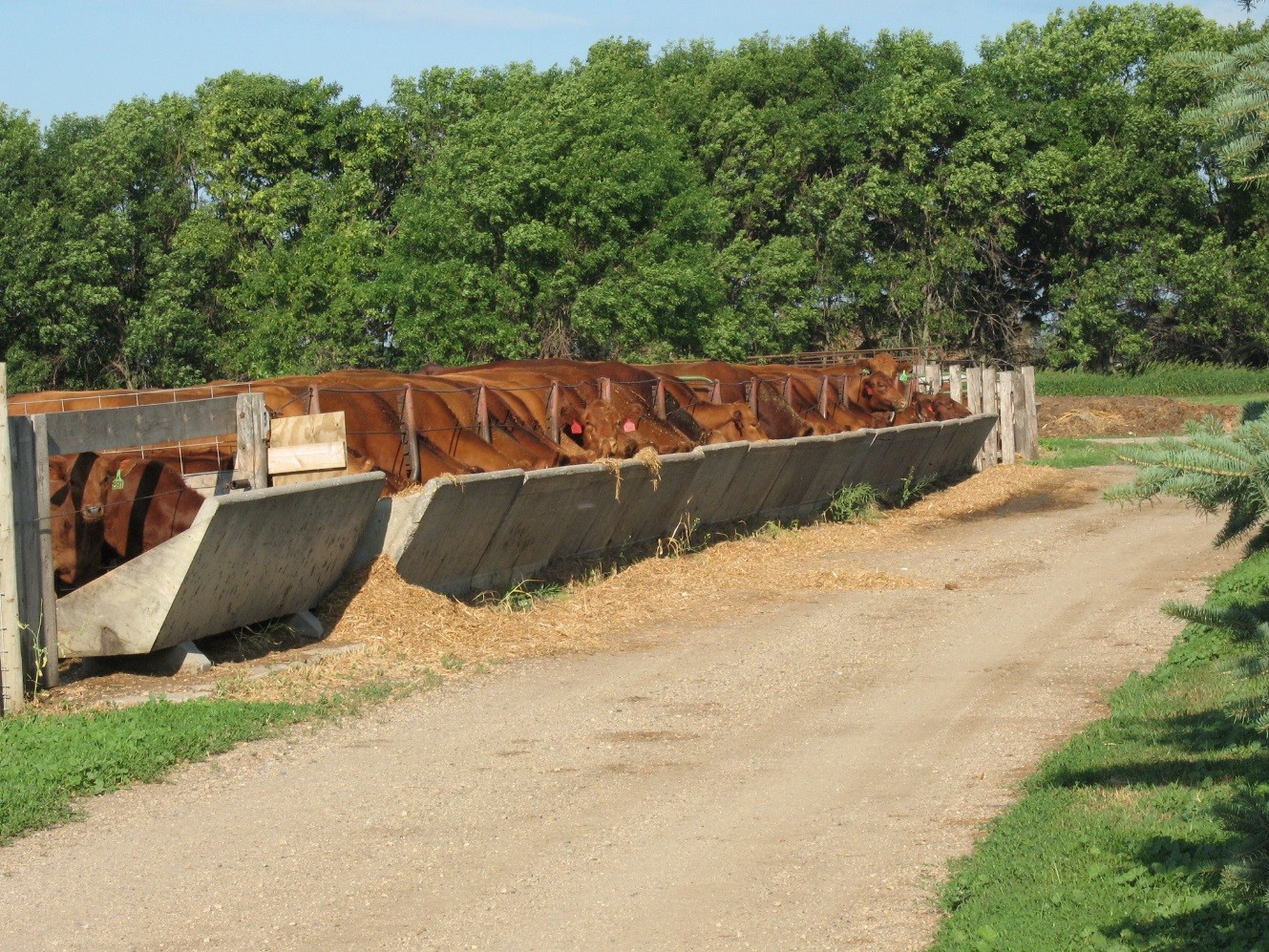Evaluation of implanting suckling steer calves in a dry-lot management system

The performance benefits of implanting calves during the suckling phase is well documented. Although many cattlemen do not take advantage of this tool. The reasons for this vary, but one that pops up frequently is the thought that implanting nursing calves decreases calf performance post weaning. Additionally the body of research on this topic is designed around cows and calves that are on pasture at the time the suckling implant is employed.
The Carrington Research Extension Center has been conducting research evaluating alternative cow management systems with cows and calves managed year round in dry-lot pens with daily feed delivery to a bunk. In this system, in addition to suckling, calves are provided with a creep ration in a bunk that excludes cow accesses.
In 2015 we designed a trial to evaluate the effects on weaning weight, average daily gain and post weaning performance of suckling steers implanted and managed in the dry-lot system. We randomly allotted dry-lot managed steer calves (n= 49 head) to one of two treatments: 1) control: no implant or 2) implanted with Ralgro® (36 mg Zeranol). Calves were weighed and allotted to treatment on May 15, 2015 and averaged 225 pounds (Table 1). The implanted steers gained 0.14 pounds/head/day (lb/hd/d) more than their non-implanted contemporaries and thus were 30 lbs heavier at weaning.
At weaning all steers were moved to the weaning pen at the center and started on a weaning/growing ration. Twenty-eight days after weaning all calves were weighed and implanted or re-implanted. The first month post weaning, the steer calves that were implanted during the suckling phase gained slightly more (2.22 lb/hd/d) than the non-implanted steers (2.18 lb/hd/d). Interestingly following re-implant, from day 28 post weaning, the calves that were implanted during the suckling phase seemed to respond greater than the control steers that were implanted for the first time (Table 2).
In conclusion implanting nursing calves increased weaning weights. Additionally steers that were given an implant during suckling gained more weight post weaning and seemed to respond greater to the initial post weaning implant than the control steers.
Chanda Engel
Research Specialist



